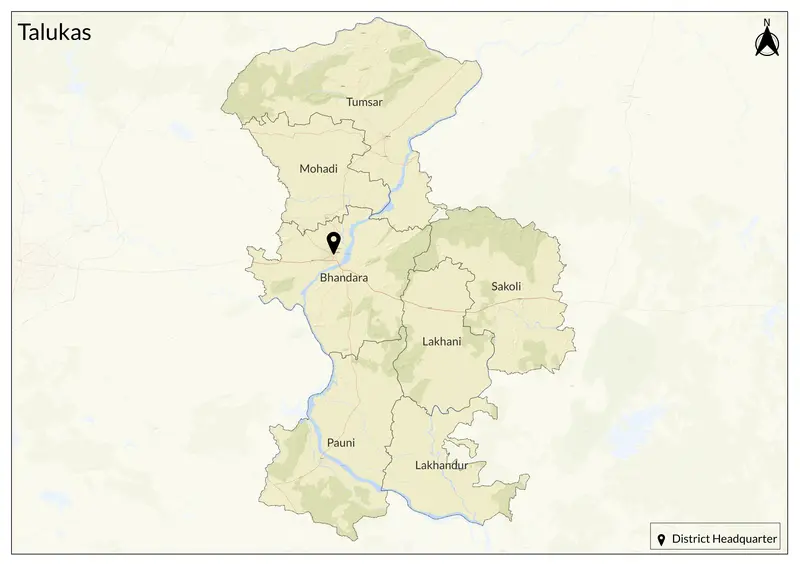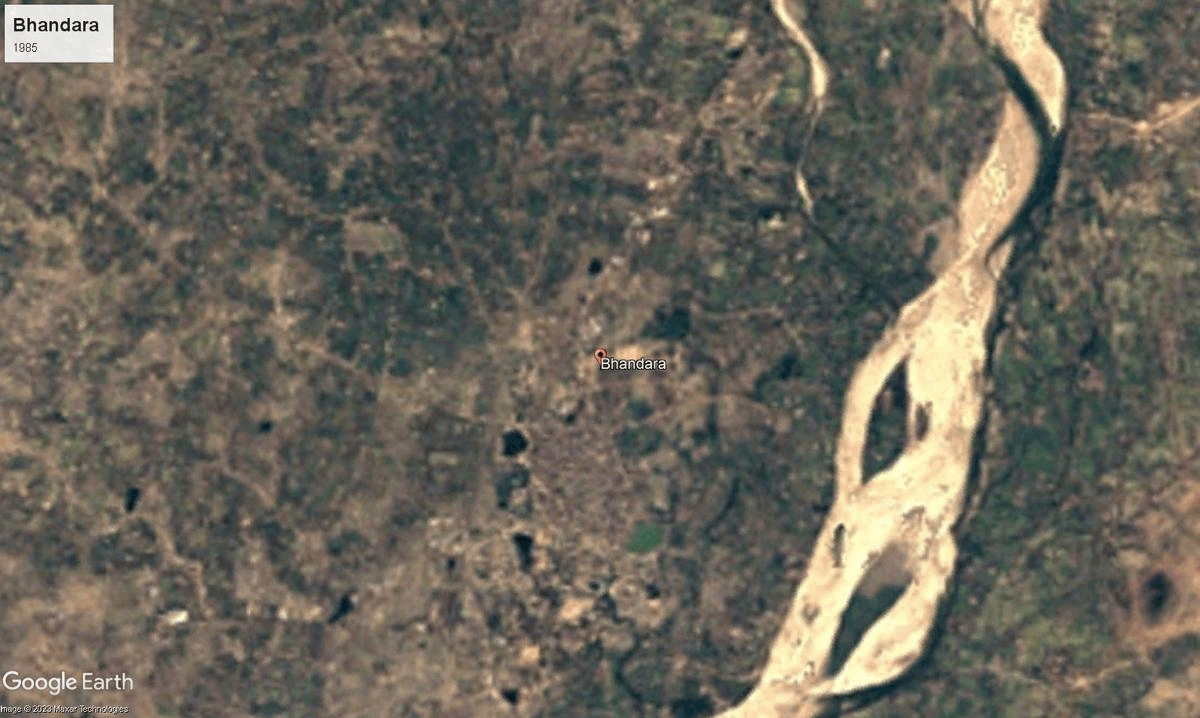Bhandara

3,717 sq. km
~12.80 lakh (2019)
982 (2011)
~ ₹13,850 crore (2019)
~ ₹1.08 lakh (2019)
Bhandara District is located in the Nagpur division of Maharashtra, with its headquarters in Bhandara city. It consists of seven talukas: Bhandara, Tumsar, Pauni, Mohadi, Sakoli, Lakhani, and Lakhandur. The district shares its borders with Balaghat (Madhya Pradesh), Chandrapur, Gadchiroli, Gondia, and Nagpur. Bhandara is split between two rivers, the Wainganga and the Sur.
The name Bhandara is believed to be a variation of "Bhanara," mentioned in an 11th-century inscription found at Ratanpur (located in Bilaspur in Chhattisgarh). Historically, the region was ruled by the Haihaya Yadav kings of Chhattisgarh (kingdom was called Mahakoshal) and later by the Panwar Rajputs in 12th century, followed by Gond chiefs. In the 17th century, it became part of Berar under the Peshwas before being taken over by the Nizams in 1850s and eventually being ceded to the British East India Company in 1903. After the reorganization of states in 1956, Bhandara became part of Bombay Province and later Maharashtra in 1960. In 1999, the district was divided to form the new Gondia district.
The district is home to several historically notable sites, including Ambagad Fort, Brahmi, Chinchgad, and Dighori. It also features Gose Khurd Dam and Nagarjuna Vihara. Notably, it has housed the most prominent (perhaps the only) settlement of Tibetans in the state, called, the Norgyaling Tibetan settlement, which formed the community in 1972 (this has now moved to Gondia district after the district division).
Bhandara is known as the "Brass City" for its brass products industry and is also recognized for its large rice production, particularly in Tumsar. The district has a mixed economy with agriculture, industries, and forest resources. It is also known for the Ordnance Factory Bhandara, manufacturing products for the Indian Armed Forces, and other industries like Ashok Leyland, Sunflag Iron Steel, and Shivmangal Ispat. Moreover, Bhandara Chinoor Rice has received the Geographical Indication (GI) status, making it exclusive to the region.
